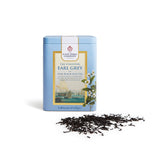Stories
The History of Benjarong
In a historical move in 1908, King Rama V graciously allowed his nobility to acquire Benjarong. Marking a transformative chapter 60 years from the beginning of his leadership, King Rama IX further decreed that Benjarong's artistry and beauty should be accessible to anyone with the resources to acquire it.
The name 'Benjarong' translates to 'five colours'. However, contemporary interpretations often employ up to fourteen mesmerising hues, painting vibrant tales through their intricate designs.
Continuing a legacy that's remained relatively unchanged for over four centuries, Benjarong is meticulously handcrafted in boutique studios across Thailand. This craft, zealously guarded by Thai artisan families, sees its wisdom passed down generation to generation. Every brush stroke tells a story, with each piece being skilfully sketched in remarkable detail before being painted by hand. These artisans dedicate over three years of rigorous training, honing their skills before they craft a singular masterpiece.
The Benjarong collections boast a diverse tapestry of designs, shades, and patterns. These range from timeless geometric motifs to the fluid elegance of Chinese patterns, many tracing their roots to the renowned Ming Dynasty (1366 - 1644). Interestingly, each artisan family pledges allegiance to a unique pattern, ensuring the continuation of a distinct lineage.
Crafted upon request in limited numbers, the delivery of a Benjarong piece typically spans approximately 8 weeks from the order's inception. Globally recognised and celebrated, Benjarong artefacts are treasures that evoke admiration and desire.
Regarded as one of the pinnacle collections of artisan-made fine bone china tableware, owning Benjarong is a rare experience. It's not merely about possession; it's a commitment to safeguarding a piece of history for forthcoming generations. Truly, each Benjarong item is an heirloom, embodying artistry and heritage, destined to be revered eternally.



 Ceylon / Sri Lanka
Ceylon / Sri Lanka Assam, India
Assam, India Japan
Japan Taiwan
Taiwan Nepal
Nepal China
China Kenya
Kenya Egypt
Egypt South Africa
South Africa










